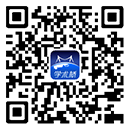一、炙热题型--排序题考前得分要领
段落排序题仍然是今年的备考重点,全部做对该题目的可能性微乎其微,所以就需要讲究方法,在考场上多快好省的确保拿到6~8分。拿分要领为:答对首段(如果没有给)和第二段,以及已知段后面的一段,即对2-3个,剩下的,不要做了,直接选一个肯定入选但不确定排哪里的答案。
【解题步骤】
1.阅读已经固定的段落
如果固定段落是首末段,那么通过阅读首末段就可以得知整个文章的主旨大意,还要注意将已经确定的两个选项从卷子上划去,防止引起不必要的混乱;如果是首段+中间段,那也可以知道大意和文章部分内容信息。
但是,如果首段没有要先选出首段。 2.如何选首段 首段的特点: 1)首句不含有代词,不含有总结性、过渡性词(转折、因果、顺延等) 2)一般不含有最高级、第一或最后意思的词语,因为首段没有比较的对象。 3.阅读选项,尤其是首尾句。给段落作初步的位置预知和组块 考生做不到一次性排出来,能排出来的就排,一时定不了的,做如下工作: 1)位置预知:含so, conclude等表示结束的词,可能作为尾段。但是也要警惕未必,总之还是要综合看。
2)组块:
有些段一看就觉得应该一个前一个后,比如A段末提到... there are two branches.F段末提到了,the first one is...。那么A和F就属于明显的总分关系,应该前后连贯。
例如2010年的E段末出现了
[E]... at the same sluggish pace as the retail market, but the figures, when added together, mask two opposing trends.而A段开头则是
[A] The first and more important is the consumer's growing preference for eating out: consumption of food and drink in places other than homes has risen from about...
所以明显的顺序是E >A。
3)精确排列各个段落的顺序,利用其它关联词进行验证。
【例题】2014年
Directions:
The following paragraphs are given in a wrong order. For Questions 41-45, you are required to reorganize these paragraphs into a coherent text by choosing from the list A-G and filling them into the numbered boxes. Paragraphs A and E have been correctly placed. Mark your answers on the ANSWER SHEET. (10 points)
[A] Some archaeological sites have always been easily observable - for example, the Parthenon in Athens, Greece; the pyramids of Giza in Egypt; and the megaliths of Stonehenge in southern England. But these sites are exceptions to the norm. Most archaeological sites have been located by means of careful searching, while many others have been discovered by accident. Olduvai Gorge, an early hominid site in Tanzania, was found by a butterfly hunter who literally fell into its deep valley in 1911. Thousands of Aztec artifacts came to light during the digging of the Mexico City subway in the 1970s.
[B] In another case, American archaeologists René Million and George Cowgill spent years systematically mapping the entire city of Teotihuacán in the Valley of Mexico near what is now Mexico City. At its peak around AD 600, this city was one of the largest human settlements in the world. The researchers mapped not only the city's vast and ornate ceremonial areas, but also hundreds of simpler apartment complexes where common people lived.
[C] How do archaeologists know where to find what they are looking for when there is nothing visible on the surface of the ground? Typically, they survey and sample (make test excavations on) large areas of terrain to determine where excavation will yield useful information. Surveys and test samples have also become important for understanding the larger landscapes that contain archaeological sites.
[D] Surveys can cover a single large settlement or entire landscapes. In one case, many researchers working around the ancient Maya city of Copán, Honduras, have located hundreds of small rural villages and individual dwellings by using aerial photographs and by making surveys on foot. The resulting settlement maps show how the distribution and density of the rural population around the city changed dramatically between AD 500 and 850, when Copán collapsed.
[E] To find their sites, archaeologists today rely heavily on systematic survey methods and a variety of high-technology tools and techniques. Airborne technologies, such as different types of radar and photographic equipment carried by airplanes or spacecraft, allow archaeologists to learn about what lies beneath the ground without digging. Aerial surveys locate general areas of interest or larger buried features, such as ancient buildings or fields.
[F] Most archaeological sites, however, are discovered by archaeologists who have set out to look for them. Such searches can take years. British archaeologist Howard Carter knew that the tomb of the Egyptian pharaoh Tutankhamun existed from information found in other sites. Carter sifted through rubble in the Valley of the Kings for seven years before he located the tomb in 1922. In the late 1800s British archaeologist Sir Arthur Evans combed antique dealers' stores in Athens, Greece. He was searching for tiny engraved seals attributed to the ancient Mycenaean culture that dominated Greece from the 1400s to 1200s BC. Evans's interpretations of these engravings eventually led him to find the Minoan palace at Knossos (Knosós), on the island of Crete, in 1900.
[G] Ground surveys allow archaeologists to pinpoint the places where digs will be successful. Most ground surveys involve a lot of walking, looking for surface clues such as small fragments of pottery. They often include a certain amount of digging to test for buried materials at selected points across a landscape. Archaeologists also may locate buried remains by using such technologies as ground radar, magnetic-field recording, and metal detectors. Archaeologists commonly use computers to map sites and the landscapes around sites. Two- and three-dimensional maps are helpful tools in planning excavations, illustrating how sites look, and presenting the results of archaeological research.
41. → A → 42. → E → 43. → 44. → 45.
① 凡本站注明“稿件来源:中国教育在线”的所有文字、图片和音视频稿件,版权均属本网所有,任何媒体、网站或个人未经本网协议授权不得转载、链接、转贴或以其他方式复制发表。已经本站协议授权的媒体、网站,在下载使用时必须注明“稿件来源:中国教育在线”,违者本站将依法追究责任。
② 本站注明稿件来源为其他媒体的文/图等稿件均为转载稿,本站转载出于非商业性的教育和科研之目的,并不意味着赞同其观点或证实其内容的真实性。如转载稿涉及版权等问题,请作者在两周内速来电或来函联系。






 中国教育在线
中国教育在线





















